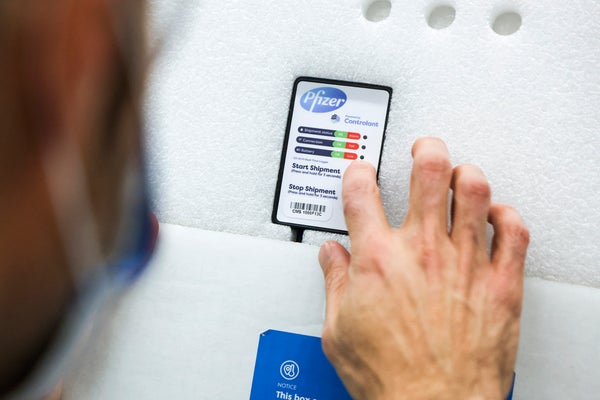The items below are highlights from the free newsletter, “Smart, useful, science stuff about COVID-19.” To receive newsletter issues daily in your inbox, signup here.
Here’s the best chart I’ve found so far to compare the effectiveness of the Pfizer, Moderna, AstraZeneca, Janssen (Johnson & Johnson), and Novavax vaccines against COVID-19 (last updated 1/31/21). The chart is published at the site “Your Local Epidemiologist,” by epidemiologist Katelyn Jetelina. Other factors compared in the table: effectiveness of each vaccine against the variant first identified in the UK and the one first identified in South Africa, where known; effectiveness against severe COVID-19; status of each vaccine in the U.S. (such good news in this line of the table); status of experiments/trials in children; and the vaccine makers’ plan for addressing new viral variants. As I read in a December 2020 story at Business Insider, it can be complex to compare effectiveness and other results across these vaccine studies, because they were done differently.
Available data indicate that COVID-19 vaccines perform better than you might think based on some of the “public discussion," writes David Leonhardt at The New York Times (2/1/21). All five vaccines mentioned above “have eliminated COVID-19 deaths,” he writes, and all have “drastically reduced hospitalizations.” A lot of the news media focuses lately on relatively minor differences among the vaccines’ effectiveness, which can give the incorrect impression that vaccines won’t prevent severe cases of COVID-19, the story suggests. Elimination of the virus is not what is required for us to return to “normal life,” Leonhardt writes. “We instead need to downgrade it from a deadly pandemic to a normal virus,” he adds, like some of the other coronaviruses that cause the common cold.
On supporting science journalism
If you're enjoying this article, consider supporting our award-winning journalism by subscribing. By purchasing a subscription you are helping to ensure the future of impactful stories about the discoveries and ideas shaping our world today.
This cool and somewhat haunting video-animation shows how SARS-CoV-2 binds and fuses to a host cell (such as one in our nasal passage) and inserts genetic material (RNA) into the cell. It was created by Janet Iwasa of the University of Utah in collaboration with the Coronavirus Structural Task Force at the University of Hamburg.
Cat Ferguson and Karen Hao at MIT Technology Review have written a clear, detailed story on the technology and logistics issues behind the slow COVID-19 vaccine roll-out in the U.S. (1/27/21). The piece dives into the two federal computer systems that link vaccine factories with regional clinics that administer shots. “The two are eons apart technology,” the story states. Early on, the story features a clickable graphic that shows the number of 1st and 2nd doses, made by either Pfizer or by Moderna, available for weekly national distribution to date. The biggest distribution problems occur once doses make it to pharmacies and clinics, the story states. “With little federal guidance or money, jurisdictions are struggling with even the most basic requirements of mass immunization, including scheduling and keeping track of who’s been vaccinated,” the story states. In some U.S. states, data on the # of vaccines administered reportedly is written on paper and then entered into a computer system.
A 1/8/21 Alaska Public Media story by Nathaniel Herz might bring to mind the heartwarming 1925 drama of Balto, the sled dog. These days, as Herz reports, the drama of delivering COVID-19 vaccine doses still involves sleds, but also planes and a water taxi. Alaska leads among U.S. states for vaccinating the largest percentage of people (17.7 doses per 100 people, as of 2/3/21) for COVID-19, per this Bloomberg chart.
A useful guide by freelance journalist Sara Reardon for Scientific American (1/29/21) provides quick summaries of the five most prominent SARS-CoV-2 variants that have cropped up worldwide (one first identified in Spain, one first ID’d in the UK, one first ID’d in South Africa, and two first ID’d in Brazil). In the past year, slow and uncoordinated efforts to address the pandemic have allowed the virus plenty of time to evolve to mutations that could prove more contagious or more harmful to those who come down with symptoms. “Thus far, vaccines made by Moderna and Pfizer seem to work against the new variants, although Moderna has begun developing a booster shot specific to new variants,” Reardon writes. “Because these two vaccines are more than 90 percent effective, a slight drop in effectiveness would still make them worth using, experts say.”
I know you’ve read countless articles about what to do if you’re exposed to SARS-CoV-2, but this 1/11/21 guide published by the Harvard Medical School is my current favorite — it's well written, succinct, and reliable. The section on what to do if you think you or your child might be infected is strong: “If you have a high or very low body temperature, shortness of breath, confusion, or feeling you might pass out, you need to seek immediate medical evaluation. Call the urgent care center or emergency department ahead of time to let the staff know that you are coming, so they can be prepared for your arrival.” Many of us avoid going to the doctor when we feel sick. But per this advice, if you have any of the above symptoms, please do seek medical attention. There’s no cure for COVID-19 but health care workers know better than you do how to take care of you if you’re sick with COVID-19. It could save your life.
You might enjoy this “Cookie Monster agate from Brazil,” on MikeBowers714’ Instagram feed [sound on] (1/16/21).
